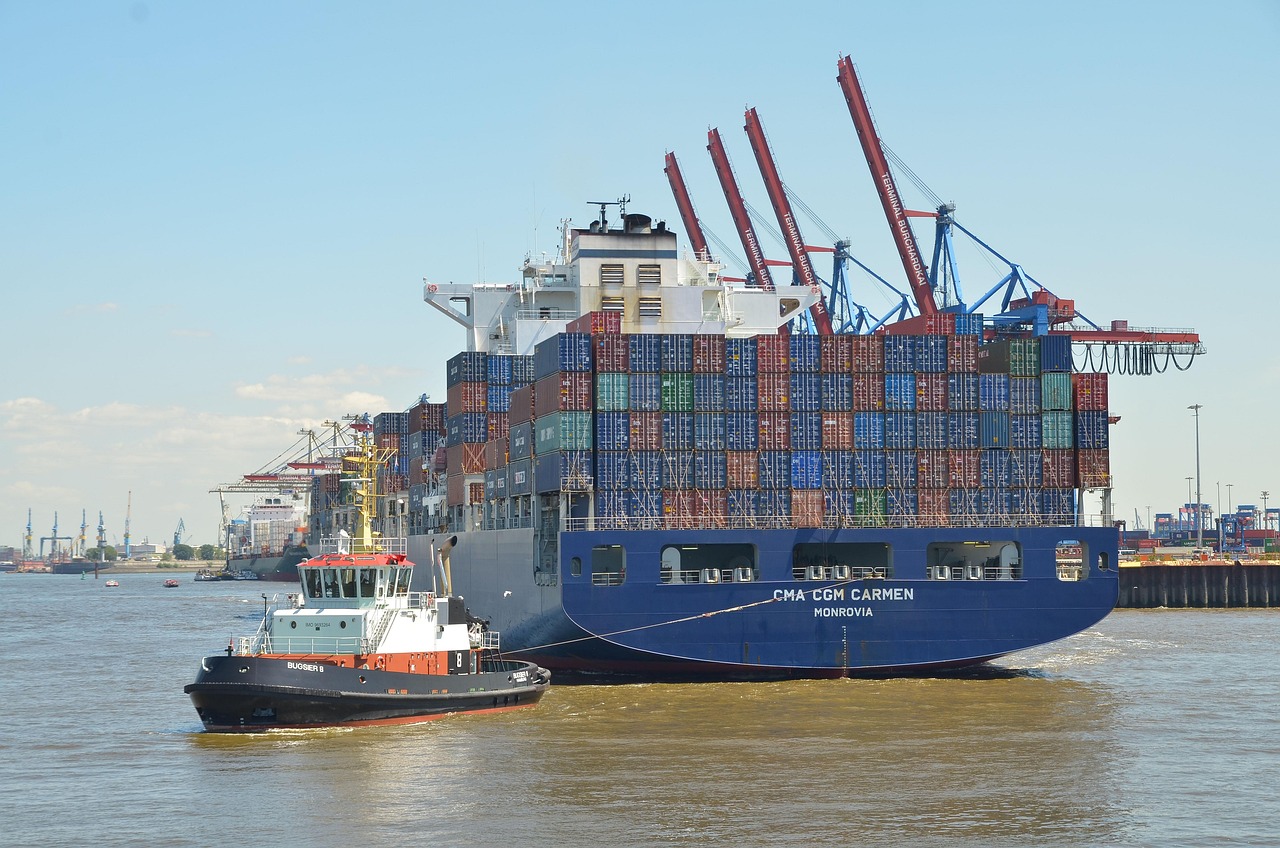
Despite facing geopolitical and economic challenges, the throughput data for the first quarter of the year at the Port of Hamburg has shown strong performance, underscoring its significance for the German and European economies. Nearly all categories of goods saw an increase in throughput at the universal port in Hamburg. Compared to the same period last year, the throughput of maritime goods increased by 3.1%, reaching 28.3 million tons. Zhongjin understands that among the three major ports in Europe, the Port of Hamburg is the only one where maritime goods throughput is on the rise.
Container throughput achieved its best quarterly performance in three years. In the first three months of this year, the Port of Hamburg recorded a container throughput of 2 million standard containers (19.9 million tons), marking a 6.3% year-on-year growth (+4.7%) and achieving the highest relative growth rate compared to other major ports in the west.
Direct container transport with India grew by nearly 40%. Frequent connections with Far Eastern countries significantly drove the growth in container throughput, with new routes to India also having a positive impact. The total volume of container transport reached 60,000 standard containers, a growth of 39.6%, second only to Malaysia, which saw a 50.6% increase to reach 54,000 standard containers. Throughput with China, the largest trading partner, also rebounded to reach 597,000 standard containers, showing an 11.3% increase. In contrast, the initial impacts of the Trump administration's policies on U.S. trade were reflected in a significant accumulation of inventory in the United States at the end of last year. Consequently, container throughput on the U.S. routes at the Port of Hamburg during the first quarter also decreased correspondingly by 19.0% to 145,000 standard containers.
The position as a universal port remains stable: general cargo and bulk cargo throughput remains steady. Traditional general cargo throughput in the Port of Hamburg has also shown an upward trend, growing by 3.5% to reach 280,000 tons; combined with container throughput, the overall general cargo throughput increased by 4.7% to reach 20.2 million tons.
In the first three months of 2025, bulk cargo throughput remained stable overall at 81 million tons (-0.8%). Due to a decrease in demand for bulk goods following the energy transition, the handling of grab cargo at the port decreased (-5.8%); the railway transport of coal and ores also decreased accordingly, with a railway loading volume of 10.9 million tons (-5.7%) in the first three months. The throughput of suction goods decreased by 14.3%, while liquid cargo throughput grew by 23.6%, showing a strong development trend.
The Port of Hamburg serves as a crucial transshipment hub for ships, railways, and road transport. Despite recent geopolitical factors affecting transit operations, the throughput of transshipment containers at the beginning of this year continued to rise, growing by 15.3% to reach 723,000 standard containers. This increase can be attributed to the addition of new liner services, feeder shipping, and structural adjustments in shipping alliances, potentially resulting in increased transshipment cargo.
Hinterland transport volumes increased to 1.3 million standard containers (+1.8%). Preliminary data indicates a slight increase in railway transport, with a transport volume of 645,000 standard containers (+0.7%).
